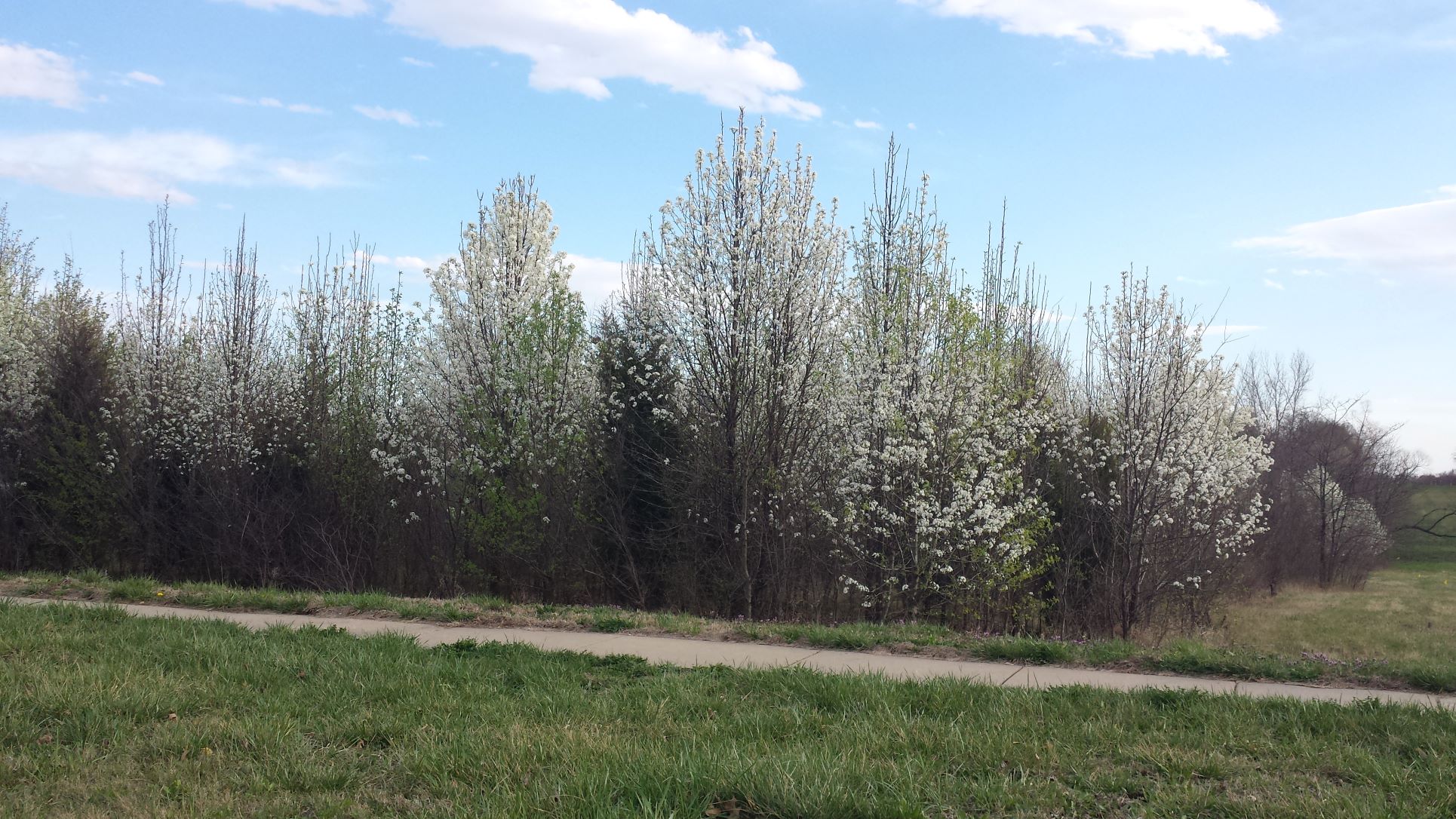Removing Ornamental Pear Trees
Ornamental Pear Trees

Once the darling of the nursery industry, the Bradford pear, Pyrus calleryana, was originally heralded as the ideal landscape tree. Although researchers at the USDA worked to develop what they believed was the perfect tree, the Bradford or ornamental pear is now a plague unknowingly released upon unsuspecting homeowners and the environment. It’s time to take a stand and cut down ornamental pears in the landscape.
It is native to the Wuhu regions of China, and seeds were first collected in the early 1900’s. The tree has a symmetrical rounded growth habit, grows in any soil type, and is covered with white flowers in the spring. It is fruitless and has glossy green leaves. Fall brings crimson, purple, and orange colors, all on a tree tolerating heat and drought.
Released on the market in 1960, the Bradford pear quickly became the preferred tree lining streets and gracing backyards. It was estimated to be the most widely sold tree into the 80’s. Visions of it being the picture-perfect tree began to fall apart like the tree as it matured.
Mature Bradford pears have narrow, weak branch angles. Under the weight of snow, ice or winds the trees broke apart, peeling limbs off like a banana. This defect led to the development of improved cultivars with a better structure. In 1977, Whitehouse, a narrow form, was released and by the mid-80’s dozens of cultivars were on the market. These were recommended as the perfect replacements for the original Bradford pear tree.
The fruitless nature of the ornamental pear was because initially it was self-sterile. Meaning it was unable to pollinate itself. Once additional genetics were introduced the once fruitless tree cross pollinated. The results became disastrous. Cross pollination resulted in a heavy crop of pea sized fruit. Birds devoured the berries, depositing the berry seeds all over. Because the seeds germinated so easily, the result was thousands of seedling ornamental pears choking out the native vegetation in our grasslands, highways, and railroad right of ways, as well as under power lines and along fences and ditches.
Unfortunately, wild seedling trees are common in the landscape and can be seen across the metro in spring covered with the white flowers. The wild trees can have sharp thorns and more fruit, producing more seeds, which further increases its spread to invade native areas. These thickets come at an expense to native plants which are important to our local pollinators and beneficial insects.
They should be cut down. Some people go to great lengths to preserve the tree in attempt to prevent them from breaking apart. Incurring additional expense, weak structured trees have been cabled, or “tied together”, to keep them from breaking apart before the next storm. Even worse, there is a tree topping practice every few years which results in an ugly tree with weaker regrowth. Hundreds, even thousands of dollars are being wasted to preserve a horrible tree. These trees should be one cut pruned. More desirable trees should be planted in their place.
Some say it is too late, the tree has escaped. If we all act, we can slow the spread and take back our native grasslands for a healthier environment. No matter how pretty, it is time to help correct one of man’s greatest plant mistakes and remove all ornamental pears.
Dennis Patton, Horticulture Turf and Ornamentals Agent, 2023
![]()